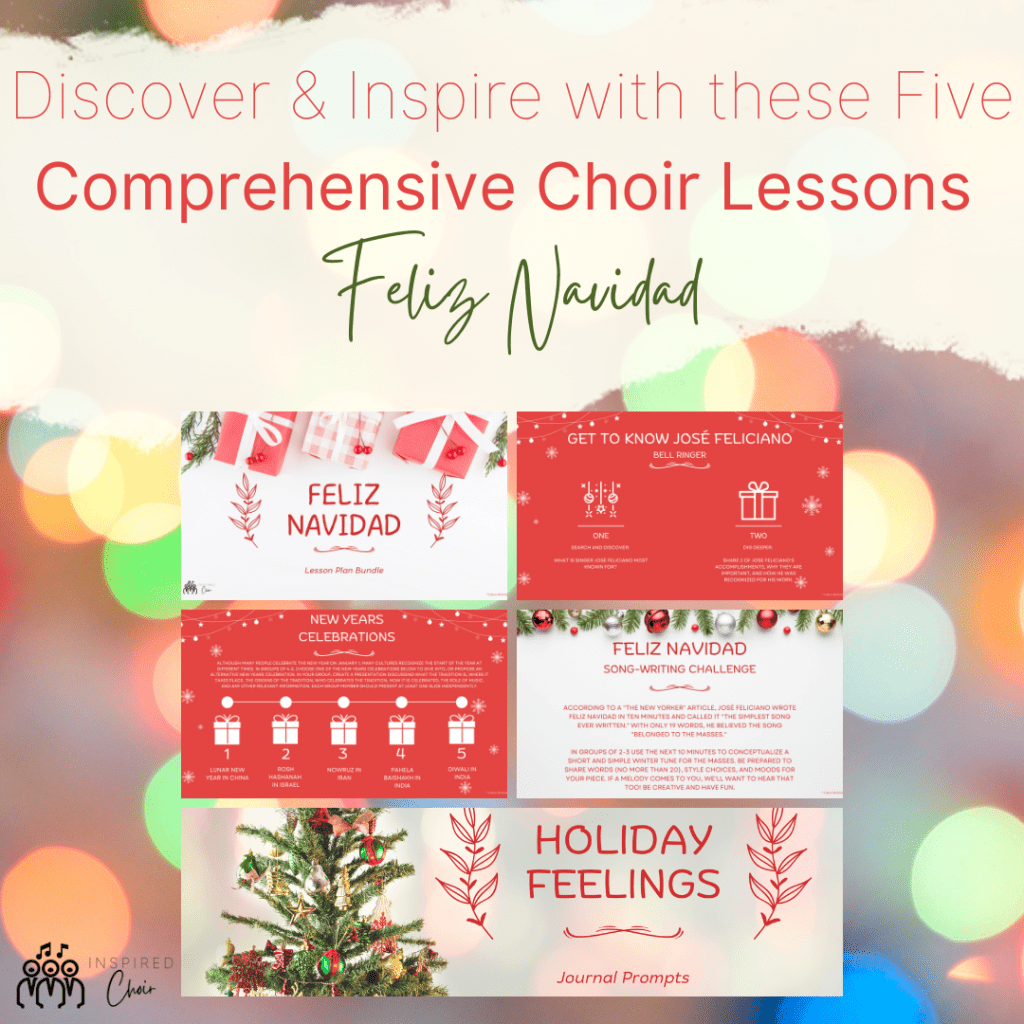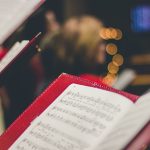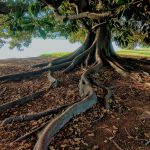Ease into Barbershop with Feliz Navidad arranged by Tom Gentry
When you think of the song Feliz Navidad, I’d bet most readers imagine José Feliciano and his guitar singing us in to the New Year. Perhaps you think of radio stations playing it on repeat during the holiday season or singing along to the catchy tune with family and friends in the car. I’d wager that Barbershop singers are likely far far from your thoughts about the classic pop tune, Feliz Navidad.
In this post, we will examine Tom Gentry’s barbershop arrangement of the Holiday classic Feliz Navidad. This arrangement manages to stays true to the message and aesthetic of the original pop tune, while utilizing different aspects of the tenor/bass voice. Read on to dive into the following aspects of this arrangement of Feliz Navidad:
- The Feliz Navidad Origin Story
- All about Arranger Tom Gentry
- Hallmarks of Barbershop Style
- New Years Celebrations around the World
- Feliz Navidad Teacher Resources
Take a listen to this arrangement here before you read!

♩From the Bottom of My Heart♩
Last year, our tenor/bass choir performed two barbershop pieces on their final concert, and several singers requested more for this year. After their challenging repertoire this past Fall, the group learned this TTBB arrangement so quickly. This has given us time to focus on barbershop tone, movement, story-telling, and independence. The story behind Feliz Navidad, knowledge of Barbershop style, and the context of New Years Celebrations around the world will help provide much-needed context to their performance.
The Story of Feliz Navidad
2020 marked the fiftieth anniversary of the creation of José Feliciano’s Holiday Classic Feliz Navidad. He wrote the iconic bilingual song in Los Angeles in 1970, reportedly in ten minutes and one take. Listen to Feliciano perform Feliz Navidad here.
Feliciano and his team wanted to put out a different kind of Christmas album, singing bilingually and playing the guitar and the cuatro. Reflecting back on the creation of the song, Feliciano shared that he was lonely and missing his family in New York City and Puerto Rico and their celebration of Christmas. He wanted to share the joy of “the whole Christmas scene.”
Although Feliz Navidad was written in 1970, it wasn’t until 1998 that it charted on the US Billboard music charts, and didn’t reach the top 10 of the Hot 100 until 2020. The song has been covered by many artists including Michael Bublé and Thalía, Finnish symphonic metal artist Tarja Turunen, and Dora the Explorer.
Learn more about José Feliciano’s career and reflections on fifty years of Feliz Navidad in this great article from NPR.

Arranger Tom Gentry
Tom Gentry is billed on his website as “Arranger of Barbershop Harmony,” which is modest in my opinion. With over 750 arrangements in his master list of works, Gentry has established himself as an authority in Barbershop arranging.
At the age of 16, Gentry sang barbershop music for the first time while performing in a production of The Music Man. He was hooked, and dedicated his 56+ year career to the Barbershop style. This dedication has allowed him to sing internationally, conduct choruses, and teach, mentor, coach, and judge all around the world. He has worked with Harmony, Inc., Sweet Adelines International, and the Barbershop Harmony Society.
A few favorites from the many arrangements by Tom Gentry (all available for TTBB, SSAA, & SATB):
- When I’m Sixty-Four by the Beatles for is short, sweet, and catchy.
- The Bare Necessities from “The Jungle Book” is a fun introduction to barbershop for any choir.
- Billy Joel’s The Longest Time was a fast favorite for many of our Bass Choir members last year.
Get to Know Barbershop Style
Like many American styles of music, Barbershop is rooted in African-American musical tradition. In the late 1800s and early 1900s, singers in Black communities harmonized spirituals, folk songs, and popular songs of the day, developing harmonies that we have come to associate with the Barbershop style.
Researcher Lynn Abbott reported that this sound began making its way around the country through both white and Black minstrel shows. White professional quartets eventually began recording and widely distributing Barbershop music, including old minstrel songs (that they originally performed in blackface, parodying Black culture) and newly written songs. Although Black professional quartets made some recordings at this time, the process of recording and distributing their music was much more difficult for them as compared to white groups.
In 1938, Owen Clifton Cash invited some friends that he knew liked to sing to a fun singing get-together in Tulsa (read the amusing invitation here). Twenty-six men attended the first meeting, 70 the second meeting, and 150 the third meeting. This group of men eventually became the Barbershop Harmony Society, which continues to actively promote Barbershop music to this day.Well-known Official and Honorary Members of the Barbershop Harmony Society include Irving Berlin, Gordon Lightfoot, Groucho Marx, Dick Van Dyke, and Lorde.
Also in Tulsa, Sweet Adelines was founded in 1945 as a place for women to sing together. Dedicated to share the unique sound of barbershop harmony, the organization has choruses around the world. Both Sweet Adelines International and the Barbershop Harmony Society hold local and international competitions, bringing together singers from all walks of life to appreciate each others work.
Barbershop teaching and learning Resources
- Free Barbershop Sheet Music for SSAA, TTBB, SATB from the Barbershop Harmony Society
- Free Music Educators Guide to Barbershop and Classroom Resources (BHS)
- Barbershop Vocal Health Resources (BHS)
- Monthly journal from the Sweet Adelines

…And A Happy New Year!
Every December 31, people around the world gather to ring in the New Year at midnight. According to this list of traditions from around the world, Americans watch the ball drop in New York City, Brazilians head to the beach, the Spanish eat 12 grapes, people in Japan eat soba noodles, and the French feast with Champagne. Regardless of tradition, people take time to acknowledge the past year and look forward to the new year.
But did you know that millions of people don’t celebrate the New Year on January 1? Although it is clear from our story of Feliz Navidad above that José Feliciano wrote the song for a celebration of a January 1 New Year, let’s take a look at some other New Year Celebrations Around the World.
Lunar New Year
Celebrated at the turn of the lunisolar Chinese calendar which is divided according to the phases of the moon, Lunar New Year is a fifteen-day event for billions of people in many Asian countries including China, Indonesia, and Vietnam. Also called “Spring Festival,” the date changes each year, but generally begins between January 21 and February 20. The final day is marked by the Lantern Festival, which celebrates the importance of family, socializing, and freedom.
Nowruz
Also known as Persian New Year, Nowruz (“new day”) has been celebrated on March 20 in the Persian diaspora and Iran for over 3,000 years. Nowruz marks the first day of the year and the start of spring. Those celebrating the new day perform ritual dances and fill vessels in their home with water, banishing bad luck and hoping for health in the new year.
Diwali
For many people in India, Diwali is the most important holiday of the year. This festival of lights, celebrated for five days each October, honors inner light that protects spiritual darkness. During these five days, people clean, shop, decorate, create colorful design patterns, gather and pray, exchange gifts, and enjoy meals with family.
Rosh Hashanah
Meaning “Head of the Year,” Rosh Hashanah is celebrated by Jewish people around the world every September or October. Traditions include eating specific meaningful foods, sounding the ram’s horn, and casting away sins. Celebrants rejoice, reflect, and celebrate the completion of another year.
Complementary Pieces
Want to listen to other pieces like Feliz Navidad? Or planning a concert and need some programming ideas? Here are a few complementary pieces!
Enjoying the Holidays Barbershop vibes?
- This arrangement of Cody Fry’s When Christmas Comes Around by Adam Scott is a nice contemporary secular addition to any TTBB ensemble’s winter repertoire.
- Explore barbershop with your SSAA ensemble with Jay Dougherty’s arrangement of Please Come Home for Christmas.
- Aaron Dole’s arrangement of Go Tell It on the Mountain for SATB features small groups and soloists – providing strong harmonizers a chance to show off.
Other pieces I’ve programmed with Feliz Navidad this winter season:
- Quest of the Kings arranged by Jacob Narverud
- Winter Sun by Don MacDonald
- We Toast the Days by Linda Kachelmeier
- John Rutter’s Christmas Lullaby
- The full Winter 2022 Choir Program Roundup

I’d Love to Hear from You!
Have you sung or conducted this Feliz Navidad with your choir? Did you know the Feliz Navidad origin story? What other Barbershop pieces do you love for TTBB ensembles? What other New Years Celebrations should I highlight? Let me know in the comments below!
Feliz Navidad Teacher Resources!
FREE Feliz Navidad Reading Comprehension Worksheet
Reading Comprehension Worksheets pull five key points from the blog post above and ask singers to consider the musical decisions they can make with the info from this post. Fill in the form below and get a link to a folder including the Winter 2022 Post Worksheets immediately!
Feliz Navidad Lesson Plan Bundle
Check out the Inspired Choir Shop for the Feliz Navidad Lesson Plan Bundle. This bundle includes the following five minute lesson plans, all with connections to National Standards and SEL Competencies:
- Get to Know José Feliciano Bell Ringers
- Feliz Navidad Song-Writing Challenge
- Barbershop Listening Assignment
- New Years Traditions Exploration Project
- Holiday Feelings Journal Prompts

















